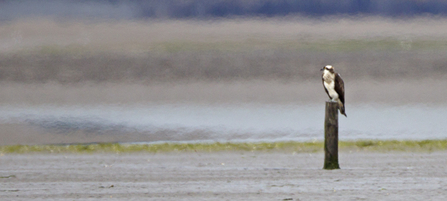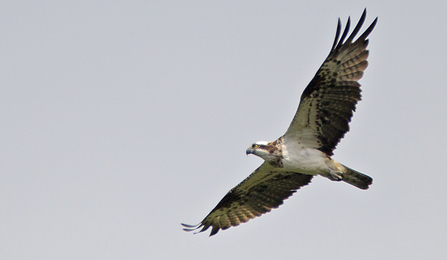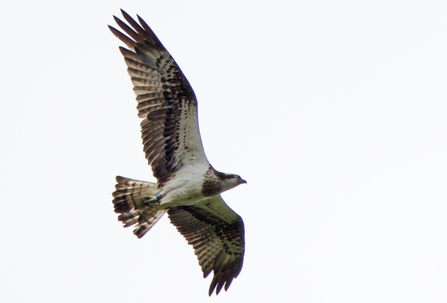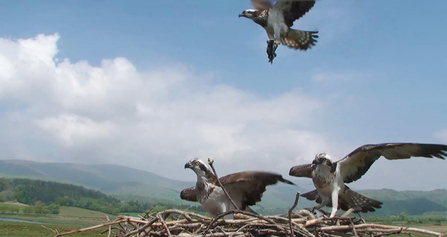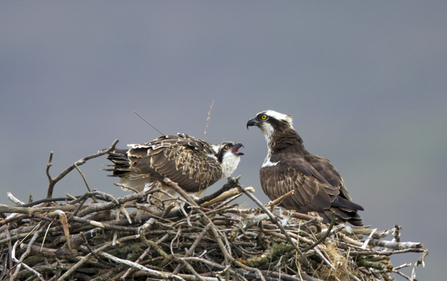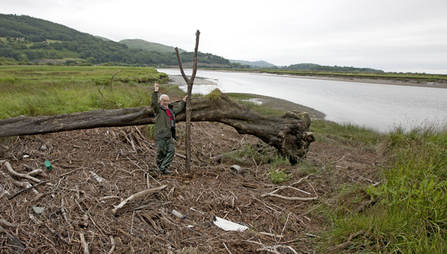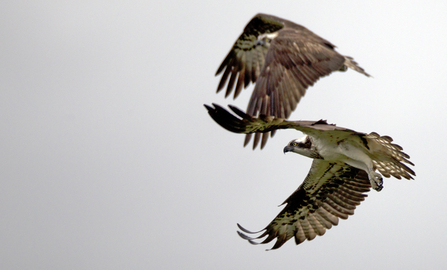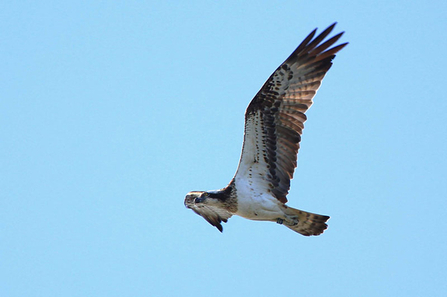I'll let you into a bit of a secret. Three weeks ago, myself and three colleagues from DOP, Alwyn, Posh Pete and Justin, popped down to the mouth of the Dyfi River for a couple of hours. Why? We've seen more ospreys on the Dyfi this year than in any other, and by quite a margin. We wanted to see if we could spot any ospreys fishing or flying around. It was a day we won't forget in a hurry.
First off, we saw this fellow perching right bang in the middle of the Dyfi Nature Reserve, owned by the Countryside Council for Wales. It looked like a male to me, but had quite a broad beak so difficult to tell from the 250m distance we were away.
Osprey, possibly male, but not ringed

